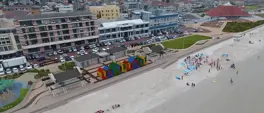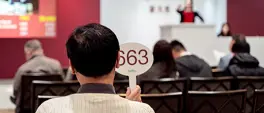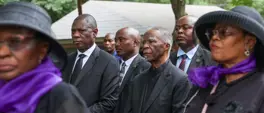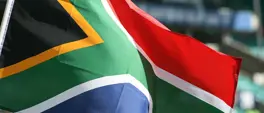MALAIKA MAHLATSI: Buthelezi revisionism an injustice to Inkatha victims
Malaika Mahlatsi
15 September 2023 | 10:00The sanitisation of Mangosuthu Buthelezi lends itself to the systematic and intentional erasure of men and women like my grandmother, who had to endure unimaginable brutality at the hands of Inkatha, writes Malaika Mahlatsi.
OPINION
“Ha ke soka ka bona sehloho se fetang sa Inkatha” (I have never known brutality greater than that of Inkatha).
Those were the words of my septuagenarian grandmother, Patricia Matshediso Mahlatsi, when she heard about the death of Mangosuthu Buthelezi.
On the day of Buthelezi’s death, I was visiting the Choeung Ek Genocidal Centre in Phnom Penh, Cambodia – a monuments of remembrance of the millions of people who were killed under the Pol Pot regime.
Between 1975 and 1979, an estimated two million Cambodians were massacred by the Khmer Rouge. At the “Killing Fields”, several mass graves and a stupa filled with victims’ skulls tell the painful story of one of the most brutal genocides the world has ever witnessed.
And although it was a mere coincidence, in my mind, there’s profundity in the fact that I found out about the death of Buthelezi as I stood inside the “Killing Fields”. Like Pol Pot, Buthelezi turned the townships of South Africa into killing fields where Black people were massacred.
A traditional prime minister to the Zulu royal family at the time of his death a week ago, Buthelezi was the chief minister of the KwaZulu homeland during apartheid. Homelands, also known as bantustans, were territories that were set aside for Black people by the National Party government as part of its apartheid policy.
Established primarily for the purpose of concentrating members of designated ethnic groups, homelands were ethnically homogenous. They were administrative devices that were used to not only exclude Black people from the South African political system, but to also consolidate the disenfranchisement that was born out of the 1913 Natives Land Act – an act of Parliament that was aimed at regulating land acquisition in South Africa.
The Act, the foundational segregation legislation passed by the Union Parliament, set parameters for the race-based legislation that would define our country’s post-union colonial and apartheid history.
It allocated only seven percent of land to Black people in what would later be known as homelands, and prohibited the acquisition of land for them outside these reserves. These homelands, deemed “autonomous” and “independent” by the apartheid government, were rightly rejected by anti-apartheid activists who saw them as nothing more than instruments to ensure that no Black person would have South African citizenship, and therefore, no Black person would be involved in the political and economic life of the country.
Despite this, and the international community’s refusal to recognise homelands, those tasked with their administration were strong proponents of the system. One such person was Buthelezi. So committed was he to homelands, islands of rural poverty, that the Inkatha Freedom Party (IFP) which he had founded in 1975 initially boycotted the 1994 democratic elections because of differences over the continuation of the homeland system that he wanted maintained in KwaZulu.
He would ultimately participate in the elections after a constitutional guarantee for the continuation of the Zulu monarchy was given.
Buthelezi’s support of apartheid constructs didn’t end with his support for homelands. While this is troubling enough, given the state of neglect and uneven development that characterised homelands which he deemed fit for habitation by Black people, more devastating was the role of Inkatha in the brutal killings that characterised the road to democracy in the early 1990s.
In her voice note, which I shared with editors of this publication, my grandmother detailed to me incidents where vigilantes affiliated with Inkatha terrorised the community of Meadowlands so much that she was almost certain that she would lose her life.
In one incident, they stopped a taxi travelling from Zone 3 to the Johannesburg central business district, demanding that everyone disembark. This was in 1991, and she was pregnant with her last-born child.
The men physically and verbally assaulted her to a point where she urinated herself. Not too long after that, gangs of Inkatha vigilantes broke into homes around Zone 3 in the middle of the night and indiscriminately attacked the occupants. The attacks would eventually take place even during the day.
For this reason, while she was at work, she would be wondering what was happening to her children, and whether she would return home to find them dead.
But it’s the story of her nephew, which she tells with a quiver in her voice, that is most illustrative of the heartlessness of Inkatha.
The year was 1992. Her nephew was walking on the streets in the township of Moletsane in Soweto. Out of nowhere, a group of Inkatha men beat him to a pulp. His limbs were severed from his body. His family would later go to the spot where he was butchered to collect the pieces of flesh and bone that were scattered all over the ground.
But it was discovered that several other people had been killed the same way at the spot and so, to this day, the family is unsure whether the pieces of flesh that they collected belonged to their son, or could’ve been someone else’s. Gruesome as it sounds, this is a common story that has been told by many across the townships of Gauteng, Mpumalanga, KwaZulu-Natal, and the North West.
Inkatha did not only physically torment South African townships. It also inflicted unimaginable psychological harm to our collective memory.
An example of this is the Boipatong Massacre that occurred in Vanderbijlpark in 1992, where 45 people were brutally murdered and many others maimed.
That the massacre occurred on the night of the 17th of June is not insignificant. This was a day that commemorated the mass killings and arrests that had occurred in 1976, which started on the 16th of June and continued throughout the month. Families of the young people who died in the hands of the apartheid government, grieving the anniversary of their loved ones, now had to contend with another massacre barely two decades later.
No family deserves to endure so many massacres in a single lifetime. And yet, this is what Inkatha, under the leadership of Buthelezi, did to our people.
By the end of its reign of terror, thousands had been killed and maimed and irreparable damage was done to multitudes of families.
Today, Buthelezi, a man who orchestrated South Africa’s own “Killing Fields”, is celebrated as a revolutionary. Some dare to call him “a man of peace”. The historical revisionism that has been happening since his passing is both infuriating and nauseating, for it renders the victims of Inkatha violence invisible.
The sanitisation of Buthelezi lends itself to the systematic and intentional erasure of men and women like my grandmother, who had to endure unimaginable brutality in the hands of Inkatha. It lends itself to the distortion of history.
Buthelezi was not a statesman, even as he would later present himself as one with the help of revisionists who are hellbent on inventing history to alter collective memory.
We must remember him for who he truly was and for his deeds. And when he is laid to rest, we must hope that the families of the Boipatong Massacre victims and the many who perished on our road to democracy, as well as those like my grandmother who live with permanent scars, find some closure.
And may we always speak the truth of the living and of the dead, even if our voices shake.
Malaika is a geographer and researcher at the Institute for Pan African Thought and Conversation at the University of Johannesburg. She’s a PhD candidate at the University of Bayreuth, Germany.
Get the whole picture 💡
Take a look at the topic timeline for all related articles.
















